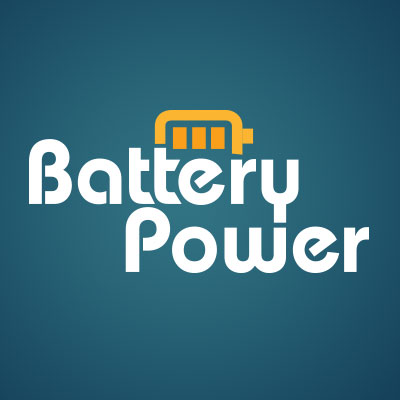Contributed Commentary by David Steele, Trojan Battery Company
July 10, 2025 | The onetime purchase price for a flooded lead-acid battery can be as little as half that of advanced technologies. However, many consumers do not account for Total Cost of Ownership (TCO). Lifetime costs of flooded batteries—including watering, maintenance, multiple replacement batteries, and employee time—can equal or exceed other advanced battery types. This article provides some insights and formulas for comparing the overall estimated lifetime costs of flooded lead-acid, VRLA, and lithium (LiFePO4) batteries.
What Goes into Calculating Battery TCO?
Understanding the application and which batteries are best suited for the vehicle or other equipment is crucial to accurately costing out a battery system. Like anything else, products are made for specific use. If misapplied, failures and issues can occur. The least expensive option is not always the best option.
Creating a TCO calculator allows decision makers to compare battery models, battery technology, Ampere-hour (Ah) capacity, numbers of batteries for each type, along with average costs that make up a system. The tool can be used to recommend solutions that best meet the specific application needs.
Identifying the Specifications for Each Battery Type
Criteria need to be established to quantify TCO for the three main battery types—flooded lead-acid, AGM, and lithium—we need to compare apples to apples as much as possible. Each battery type has an average battery life, a one-time cost per battery, and power output capability. One type also requires maintenance time.
To determine the number of batteries for an application, it’s important to understand that it can vary by chemistry. Due to energy density, available power, and quicker charge acceptance, lithium (LiFePO4) is not a one-to-one conversion ratio from lead-acid.
In some (but not all) motive applications, about half the number of LiFePO4 to flooded lead-acid batteries may be needed. This ratio is subject to change based on various conditions, such as vehicle type, amp draw, and whether it’s been modified. In the example below, the scenario is three lithium batteries for eight flooded lead-acid.
| Battery Type | Flooded Lead-Acid | AGM | Lithium-Ion |
| Initial purchase cost | $ | $$ | $$$ |
| Number of batteries (Example only) | 8 | 8 | 3 |
Note: Each $ indicates a higher initial purchase cost for each battery type. Table is based on batteries for equipment in which (4) 6V lead-acid batteries are the baseline with (2) 24V lithium units as the alternative.
Factoring in Replacement Costs
Other factors include the number of sets needed to replace the originals in a given time period.
| Battery Type | Flooded Lead-Acid | AGM | Lithium-Ion |
| Initial purchase cost | $ | $$ | $$$ |
| Number of batteries (Example only) | 8 | 8 | 3 |
| Lifespan | 3-4 years | 4-5 years | 10 years |
| Replacements 10Y | 3 | 2 | 0 |
Note: Each $ indicates a higher initial purchase cost for each battery type.
In this scenario, three additional full replacement sets of flooded lead-acid and two full replacement sets of VRLA are needed over a 10-year span. That’s four full sets of flooded lead-acid and three full sets of VRLA batteries purchased in that ten-year period. During the decade, there are zero replacement sets for lithium. This helps determine the real total cost of the systems, including replacement costs, over a ten-year period.
Investment of Maintenance Time and Effort
Another part of the equation that must be considered is the maintenance time and equipment to maintain flooded batteries.
| Battery Type | Flooded Lead-Acid | AGM | Lithium-Ion |
| Initial purchase cost | $ | $$ | $$$ |
| Number of batteries | 8 | 8 | 3 |
| Lifespan | 3-4 years | 4-5 years | 10 years |
| Replacements 10Y | 3 | 2 | 0 |
| Maintenance time 10Y | 86 hours | 0 | 0 |
Note: Each $ indicates an increase in cost.
In this example, the individual flooded lead-acid units will require regular watering intervals. This is shown as 10 minutes per week over 52 weeks. It is based on manual watering—no special equipment such as single point watering systems. Over ten years, those weekly watering requirements can amount to 86 or more hours, not counting the costs of water.
TCO: What are the True Battery Costs —for One Vehicle or a Fleet?
Many factors go into a decision about motive battery power. Examples include terrain, storage, expected usage, and environmental conditions. However, over a ten-year period, it is clear that lithium is the winner, coming in with a total return in 1.5 to 1.8 years. AGM/VRLA comes in at almost double that of LiFePO4 with a four-year return on investment.
| Battery Type | Flooded Lead-Acid | AGM | Lithium-Ion |
| Initial purchase cost | $ | $$ | $$$ |
| Total Cost of Ownership per year 10Y | $$$ | $$ | $ |
| Return on Investment over Flooded Lead Acid Years | 0 | 3.97 | 1.83 |
Note: Each $ indicates an increase in cost.
Calculating Your TCO for Greatest Impact on Operations
In summary, all battery technologies depicted in this TCO calculation are sufficient to run various types of equipment. The most important part of the equation is how they are being applied and what is expected of them.
There is no “one-size-fits all” solution for batteries. That is why there are many battery technologies and chemistries in the marketplace. Applications and associated needs must be identified upfront and discussed with experienced power solutions specialists. They can determine the best technology for an application.
Author Note: The figures used in this article are for informational purposes only and are based on assumptions which may not be representative of an individual user’s experience. No guarantee or representation is being made concerning an individual user’s total cost of ownership.
David Steele has been with Trojan Battery Company for 2.5 years. He currently serves as Director of Sales – OEM, Lithium. Prior to joining Trojan Battery Company, he spent 26 years in the industrial battery/material handling industry, holding positions in OEM and regional management. He can be reached at david.steele@cdtrojan.com







